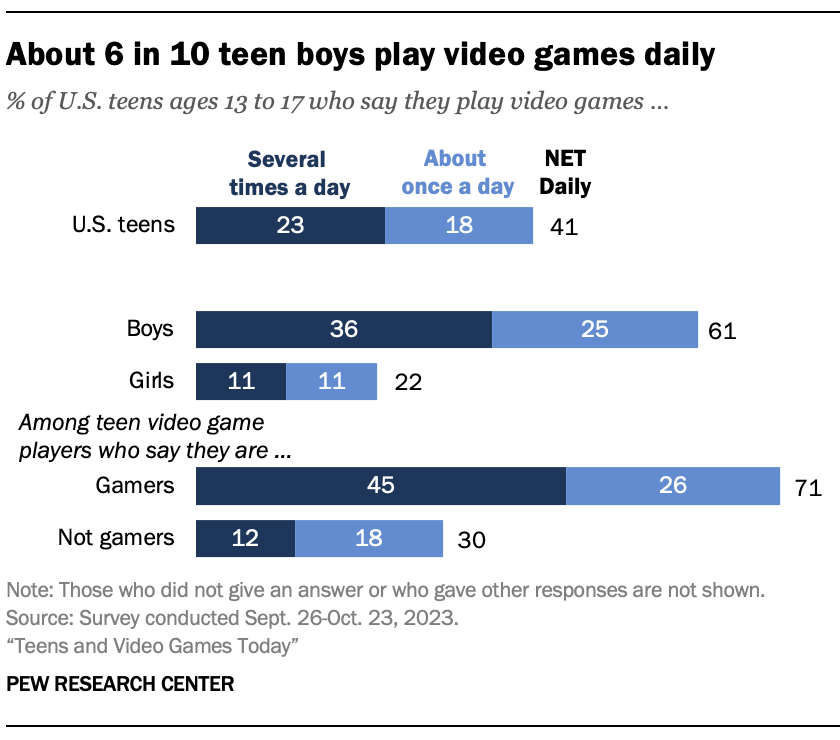
Do Guys or Girls Play Video Games More Often? An In-Depth Analysis
When it comes to the world of video gaming, one of the most commonly discussed topics is the difference in gaming habits and preferences between genders. With the gaming industry growing exponentially, it is crucial to understand how boys and girls engage with video games. This article will delve into the trends and statistics surrounding male and female gamers, exploring who plays more often and why this might be the case.
Historical Context
Traditionally, video gaming has been viewed as a male-dominated activity. From the early days of arcade games to the modern console and PC gaming landscape, the trend has been that males often engage more with video games. Recent studies indicate that about 72% of men under 30 play video games, compared to only 49% of women in the same age bracket. This disparity raises questions about the societal norms and interests that influence gaming preferences.
The Statistics Speak
As of 2024, there are approximately 1.7 billion male gamers globally, contrasted with around 1.39 billion female gamers. These statistics highlight a significant gap in the number of male versus female players. While women made up 48% of gamers in the U.S. in 2022, that figure dropped to 46% in 2023, suggesting a possible decline in female participation or an increase in the male gamer demographic.
Interestingly, it’s important to note that these numbers do not tell the whole story. A vast majority of female gamers tend to gravitate towards different genres compared to their male counterparts. Female gamers have shown a preference for casual games and social simulations, whereas males are more drawn to competitive genres such as strategy, action, and fighting games.
Reasons for the Disparity
Access and Marketing
One of the factors contributing to the gender gap in gaming is access and the way games are marketed. Historically, marketing campaigns have targeted young males with themes of competition, aggression, and adventure. Boys are often socialized from an early age to see video games as a primary form of entertainment. On the flip side, girls may receive mixed signals or feel less invited to participate in the gaming community due to these marketing trends.
Competitive Nature
Another consideration is the general competitive nature often associated with males. Many experts suggest that men are biologically more competitive, which drives them to engage in games that emphasize competition and achievement. This competitive spirit could encourage frequent gaming as a means to improve skills and rank among peers.
Aging Populations
Interestingly, while young men dominate gaming statistics, older demographics show a different trend. Women aged 50 and above tend to engage more with video gaming than their male counterparts of the same age. This phenomenon could be attributed to lifestyle changes such as retirement or more leisure time, allowing them to explore gaming in a way that younger females might not.
The Social Fabric of Gaming
Despite the noticeable differences in participation, it’s also crucial to address the social environment of gaming. Female players often face hostile attitudes in competitive gaming spaces. Despite these challenges, many continue to play due to the enjoyment and community aspects of gaming. This resilience speaks to a broader cultural trend where women are increasingly carving out their spaces in the gaming world.
Conclusion
While male gamers currently outnumber female gamers in many traditional gaming genres, the landscape is continually evolving. The rise of mobile gaming and social platforms has opened doors for many women, creating a more inclusive gaming community. As societal norms change and as game developers become more attuned to diverse audiences, it’s likely that gender disparities will continue to diminish.
Ultimately, whether discussing who plays more often or the reasons behind specific gaming preferences, it’s clear that understanding the relationship between gender and gaming can enhance the gaming experience for all. The future of gaming will likely see an increase in female participation, creating more balance and diversity within the gaming community. Through continued research and open dialogue, both male and female gamers can bridge gaps and build a vibrant, inclusive gaming culture.
